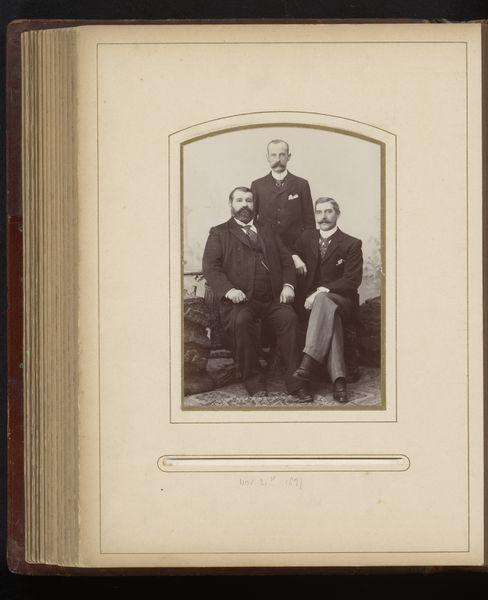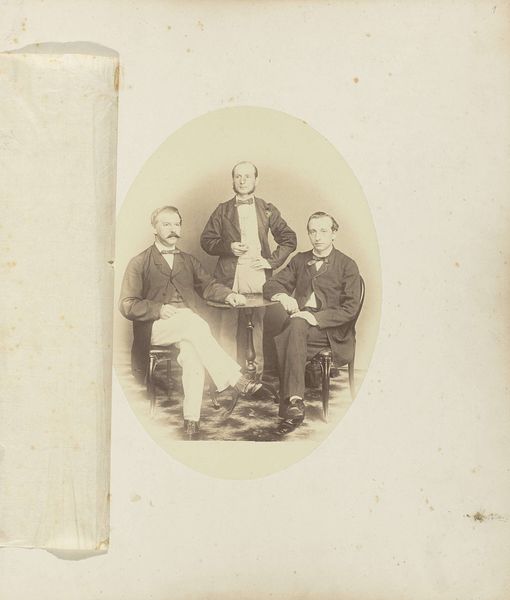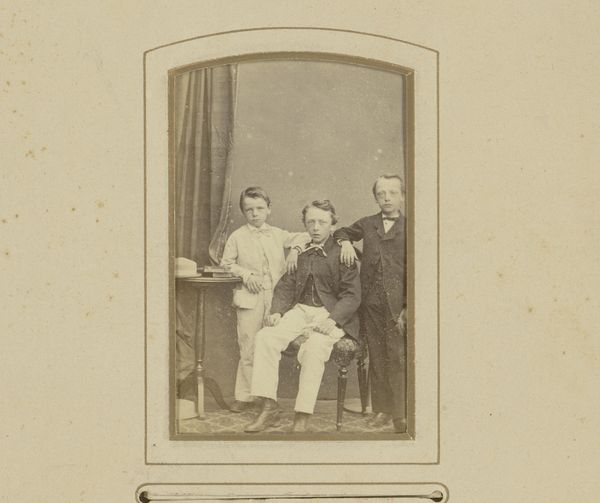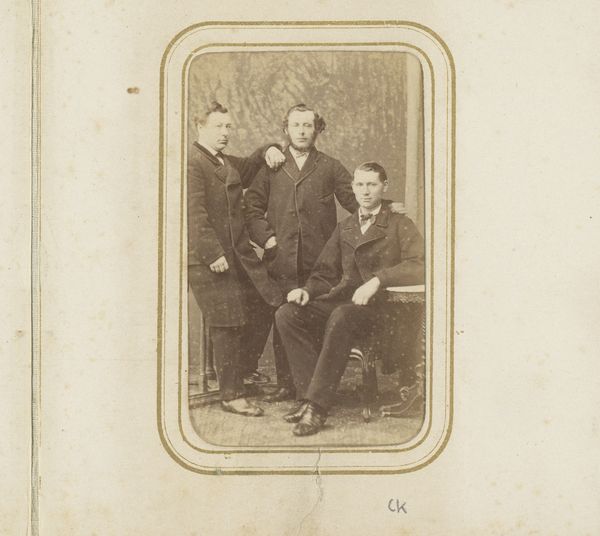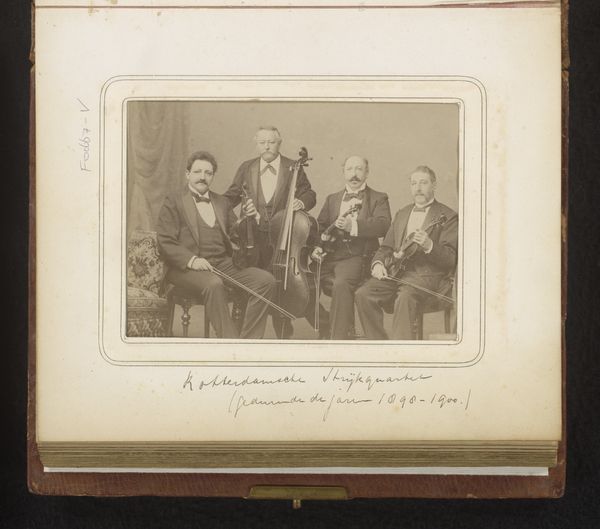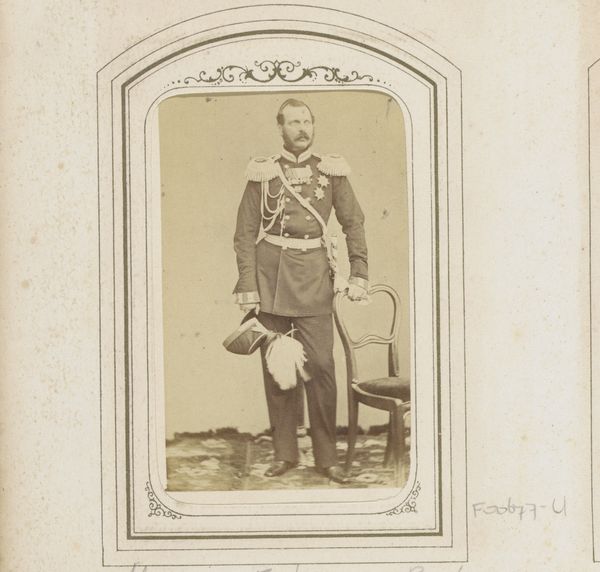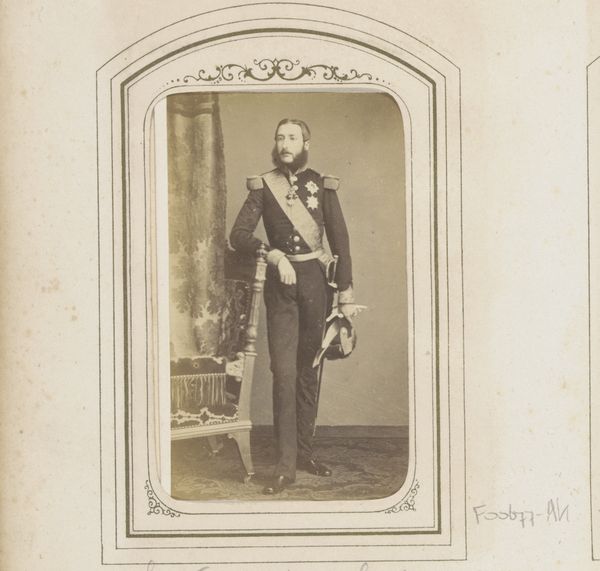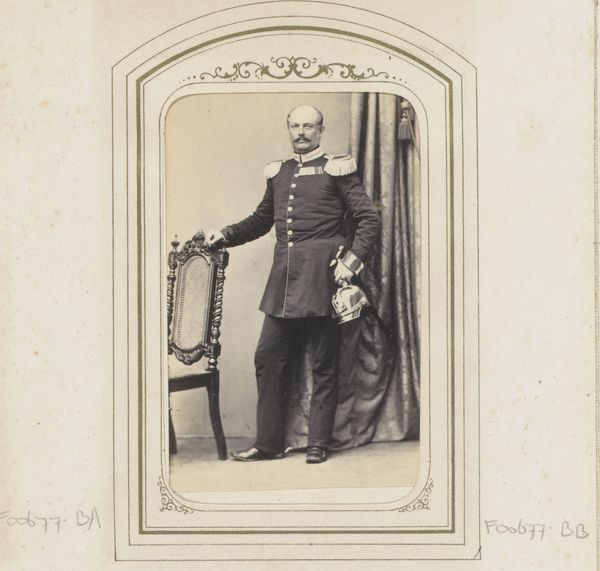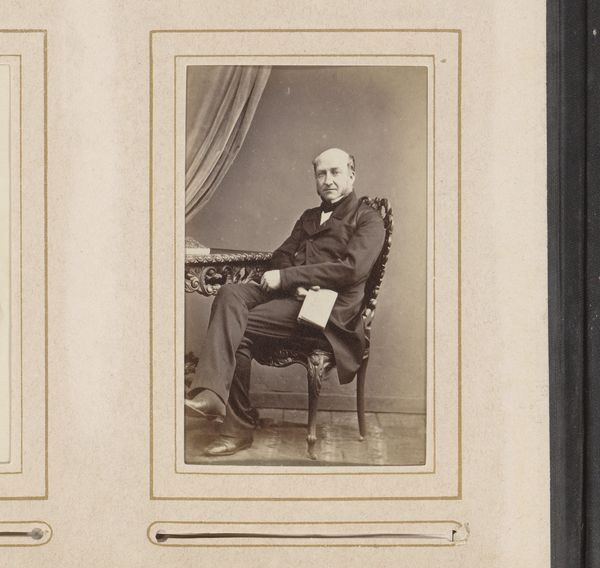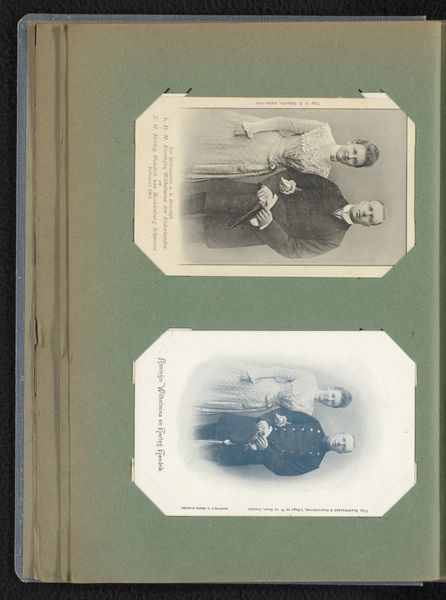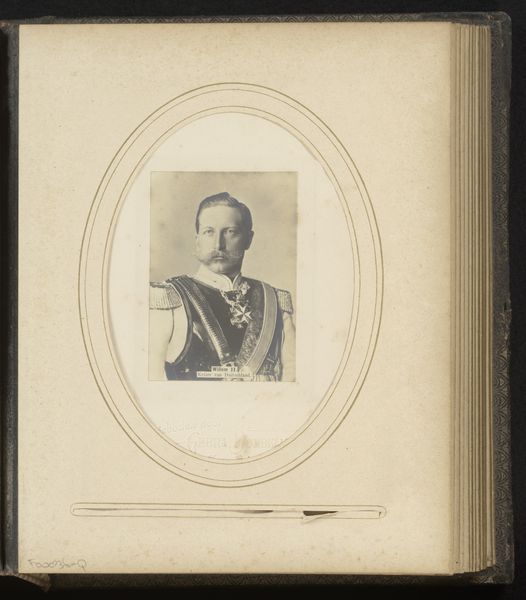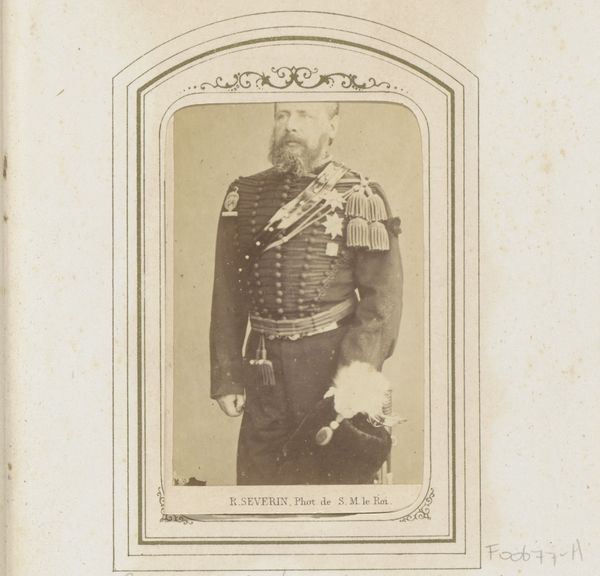
Groepsportret van Otto Eduard von Bismarck, Albrecht Theodor Emil von Roon en Helmuth Karl Bernhard von Moltke 1855 - 1870
0:00
0:00
edmundbiegnerco
Rijksmuseum
photography, gelatin-silver-print
#
photography
#
historical photography
#
gelatin-silver-print
#
history-painting
#
academic-art
#
realism
Dimensions: height 85 mm, width 53 mm
Copyright: Rijks Museum: Open Domain
Curator: Here we have a photograph titled "Groepsportret van Otto Eduard von Bismarck, Albrecht Theodor Emil von Roon en Helmuth Karl Bernhard von Moltke," attributed to Edmund Biegner & Co. It's a gelatin-silver print dating roughly from 1855 to 1870 and residing here at the Rijksmuseum. Editor: What strikes me immediately is its formality, even stiffness. The tonal range is so subtle. They all seem incredibly solemn, almost like monuments in waiting. Curator: Well, think about the historical moment. Photography was still relatively new. This isn't just a portrait; it's a construction of power. Consider the clothing: these elaborate military uniforms. These men were key figures in Prussia’s, and later Germany’s, political and military ascendance. Their outfits speak volumes about hierarchy and societal roles during a time of nation-building. Editor: Right, but that emphasis flattens into a symbol. Those uniforms are visually interesting—all that braiding and those sashes—but they function mostly as signs. The contrast enhances them against the background which appears quite minimal. Even their expressions seem designed, posed rather than naturally emerging. Curator: Posed they were. The lengthy exposure times demanded stillness, but the composition serves a purpose. It underscores their strategic alliance, literally cementing their roles in shaping history. The production of this image was likely deliberate, serving to bolster Bismarck's image, specifically. Consider the distribution, its use as a political tool... Editor: A political tool relying on the codes of portraiture, certainly. Though beyond the surface representation, the framing seems calculated to communicate stability, permanence…almost a frozen tableau that seeks to communicate rigid roles. But I find its static nature—the lack of dynamism—a little... underwhelming. Curator: Underwhelming? I think it's a powerful document that reminds us of the meticulously crafted nature of historical memory. Its impact lies in revealing the controlled construction of national identity and those figureheads manufactured for lasting significance. Editor: Fair enough, but in the end, the formal qualities—the limited palette and stark composition—become a symbol. It represents, rather than truly embodies, that era's political landscape, I would say.
Comments
No comments
Be the first to comment and join the conversation on the ultimate creative platform.
